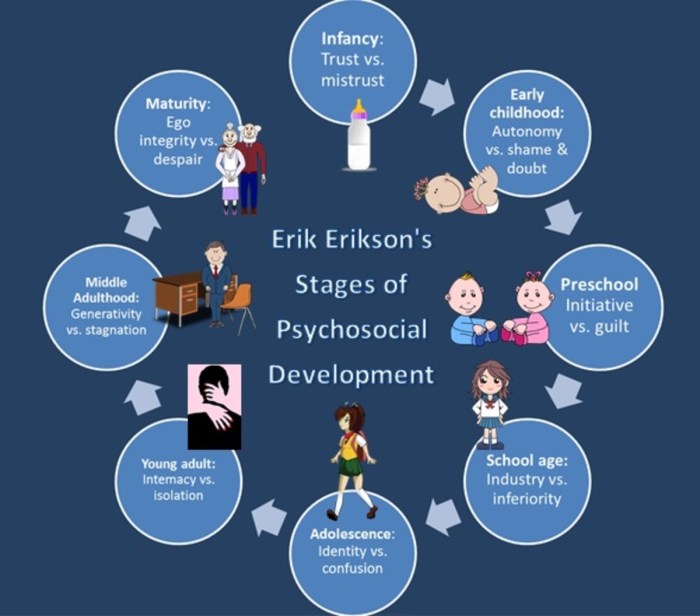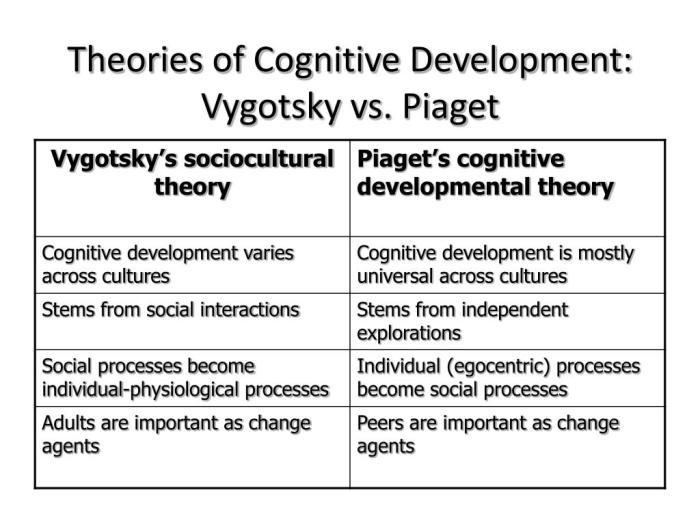Similarities and differences between piaget and erikson pdf is an exploration of the contrasting yet complementary theories of two titans in developmental psychology. Jean Piaget and Erik Erikson, through their groundbreaking work, illuminated the intricate processes of cognitive and psychosocial development, leaving an enduring legacy in the field.
Their theories, while distinct in their emphases, share profound implications for education and provide a comprehensive framework for understanding human development.
Cognitive Development: Similarities And Differences Between Piaget And Erikson Pdf

Jean Piaget and Erik Erikson, two influential developmental psychologists, proposed theories of cognitive and psychosocial development that have had a profound impact on our understanding of child development. While their theories share some similarities, they also have some key differences.
Piaget’s Theory of Cognitive Development
Piaget’s theory of cognitive development focuses on the development of logical thinking and reasoning. He proposed that children progress through a series of four stages of cognitive development, each characterized by a different way of thinking.
- Sensorimotor stage (birth to 2 years): Infants learn about the world through their senses and motor skills.
- Preoperational stage (2 to 7 years): Children begin to use symbols and language, but their thinking is still egocentric and intuitive.
- Concrete operational stage (7 to 11 years): Children develop the ability to think logically about concrete objects and events.
- Formal operational stage (11 years and up): Adolescents develop the ability to think abstractly and reason hypothetically.
Erikson’s Theory of Psychosocial Development, Similarities and differences between piaget and erikson pdf
Erikson’s theory of psychosocial development focuses on the development of personality and social skills. He proposed that children progress through a series of eight stages of psychosocial development, each characterized by a different developmental task.
- Trust vs. mistrust (birth to 1 year): Infants develop a sense of trust or mistrust based on their interactions with their caregivers.
- Autonomy vs. shame and doubt (1 to 3 years): Toddlers develop a sense of autonomy or shame and doubt based on their ability to control their own actions.
- Initiative vs. guilt (3 to 6 years): Preschoolers develop a sense of initiative or guilt based on their ability to take initiative and make choices.
- Industry vs. inferiority (6 to 11 years): School-age children develop a sense of industry or inferiority based on their ability to succeed in school and other activities.
- Identity vs. role confusion (12 to 18 years): Adolescents develop a sense of identity or role confusion based on their ability to explore different roles and identities.
- Intimacy vs. isolation (young adulthood): Young adults develop a sense of intimacy or isolation based on their ability to form close relationships.
- Generativity vs. stagnation (middle adulthood): Adults develop a sense of generativity or stagnation based on their ability to contribute to the next generation.
- Integrity vs. despair (late adulthood): Older adults develop a sense of integrity or despair based on their ability to reflect on their life and find meaning in it.
Query Resolution
What are the key differences between Piaget’s and Erikson’s theories?
Piaget focused primarily on cognitive development, while Erikson emphasized psychosocial development. Piaget’s stages are based on cognitive abilities, whereas Erikson’s stages are based on social and emotional milestones.
How can Piaget’s and Erikson’s theories be applied in educational settings?
Piaget’s theory can guide the design of age-appropriate curricula, while Erikson’s theory can inform strategies for fostering social and emotional well-being in students.
What are the implications of Piaget’s and Erikson’s theories for understanding human development?
These theories provide a framework for understanding the sequence and timing of developmental milestones, as well as the factors that influence these processes.

